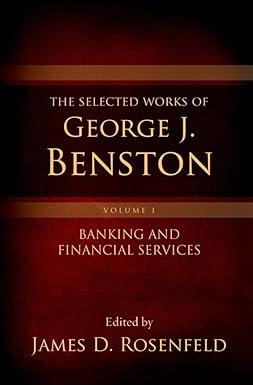Question
Chapter 10 - Budgeting On page 497 (4th Ed. page 496) is Key equation: Opening inventory + Purchases - Cost of Good Used = Ending
Chapter 10 - Budgeting On page 497 (4th Ed. page 496) is Key equation: Opening inventory + Purchases - Cost of Good Used = Ending Inventory The explanation is on pages (4th Ed. pages 515-517). Just as every medical case is different, but is similar, every set of financial statements are different, but are similar. Remember that financial statements do not stand in isolation. If you don't like the way numbers are presented, rearrange the numbers to your liking and understanding. For our purposes, I suggest changing the equation to plug into our secret sauce matrix learned earlier. Equivalent Key Equation: Opening Inventory - Cost of Goods Used + Purchases = Ending Inventory This gives us a reason to expand the 'secret sauce' with new vertical and horizontal calculations: Let's assume a For-Profit company and expand the secret sauce matrix: 1) add Property, Plant, and Equipment (PPE) to the balance sheet, 2) add Depreciation to the Income statement 3) add Inventory to the Balance Sheet 4) add Cost of Goods (COG) used or sold to the Income Statement 5) add Inventory Purchase (Inv. Purch.) to the direct Cash Statement 6) add Tax to considerations to the Balance Sheets, Income and Cash Flow Statements 7) add Distributions to the Cash Flow Statement Resulting in horizontal calculations of : Bal Sheet Income Cash End Bal Sheet ------------------------------------------------------------------ Cash + Net Cash = Cash AR + Charges - Collections = AR Inventory - COG + Inv. Purch. = Inventory PPE - Depreciation = PPE AP + Expense - Exp Paid = AP Tax + Tax Due - Tax Paid = Tax RE + Net Profit - Distributions = RE And resulting vertical calculations of: Charges - COG - Depreciation - Expenses - Tax Due = Net Profit. Collections - Inv. Purchases - Exp Paid - Tax Paid - Distributions = Net Cash
========= Question 1a and Question 1b ============
Question 1a: what are the effects of $100 increased COG on the Income Statement, Cash Flow and ending Balance Sheet, all other things being equal? Do one (1) vertical and two (2,3) horizontal calculations in order, if you need as in:
Question 1b: What are the effects of $100 additional Inventory Purchases on the Income Statement, Cash Flow Statement and ending Balance Sheet, all other things being equal? Do one (1) vertical and two (2,3) horizontal calculations in order, if you need as in:
======== Question 2 =============
Chapter 11 - Responsibility Accounting Similar to Chapter 11, Question 16 - ROI for an investment center. A new cardiac catheterization lab was constructed at Have a Heart Hospital. The investment in this lab was $950,000 in equipment cost and $50,000 in renovation cost. A desired return on investment (ROI) is 12%. Once the lab was operating, 7,000 patients were served in the first year and were charged $640 for each procedure. The annual fixed cost for the catheterization lab is $2 million, and the variable cost is $329 per procedure. Question 2a: What was the catheterization lab's profit? Question 2b: Did this profit meet its desired return on investment (ROI)? Add comments beyond 'yes/no' for the answer 2b.
Step by Step Solution
There are 3 Steps involved in it
Step: 1

Get Instant Access to Expert-Tailored Solutions
See step-by-step solutions with expert insights and AI powered tools for academic success
Step: 2

Step: 3

Ace Your Homework with AI
Get the answers you need in no time with our AI-driven, step-by-step assistance
Get Started


